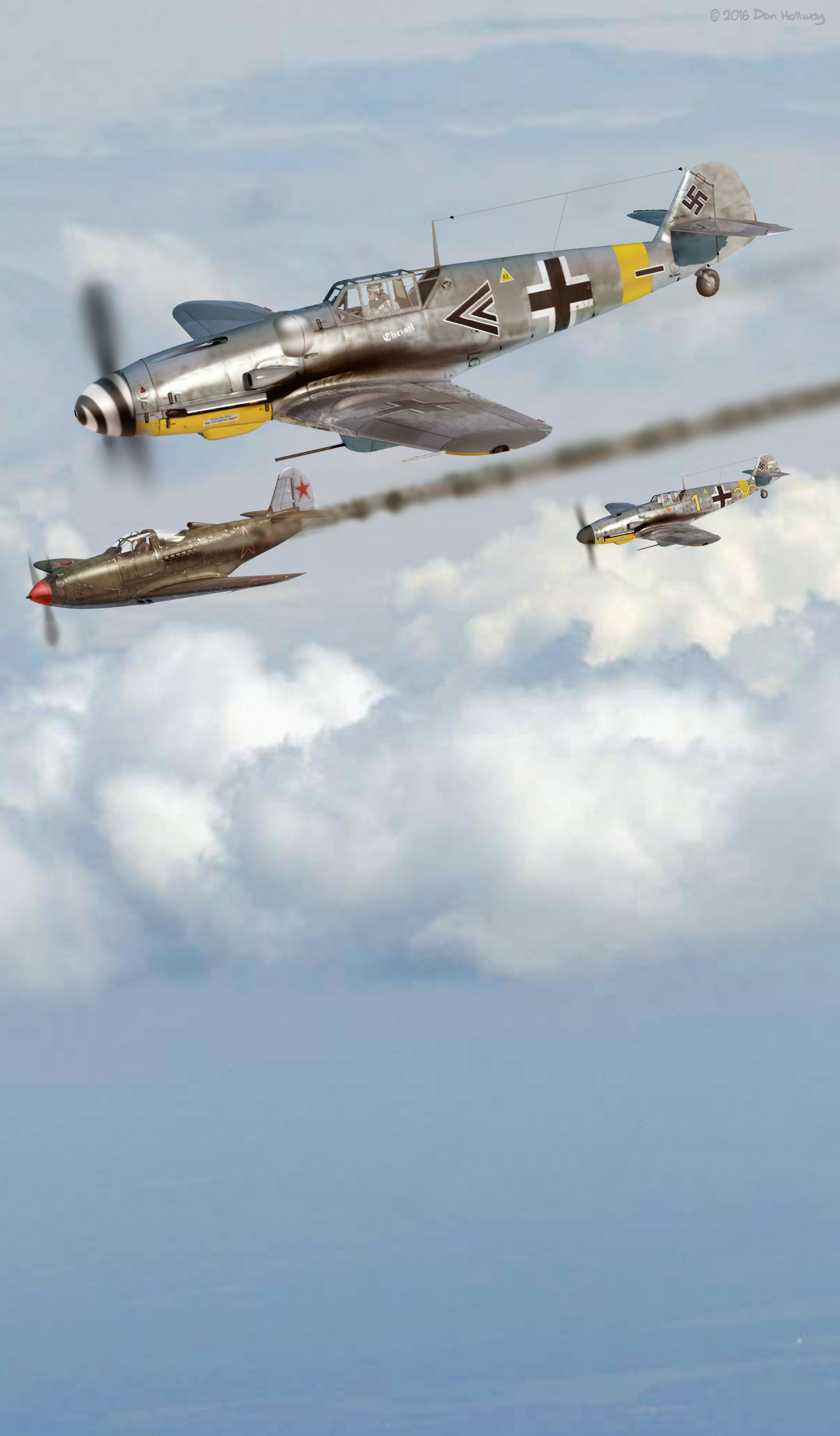
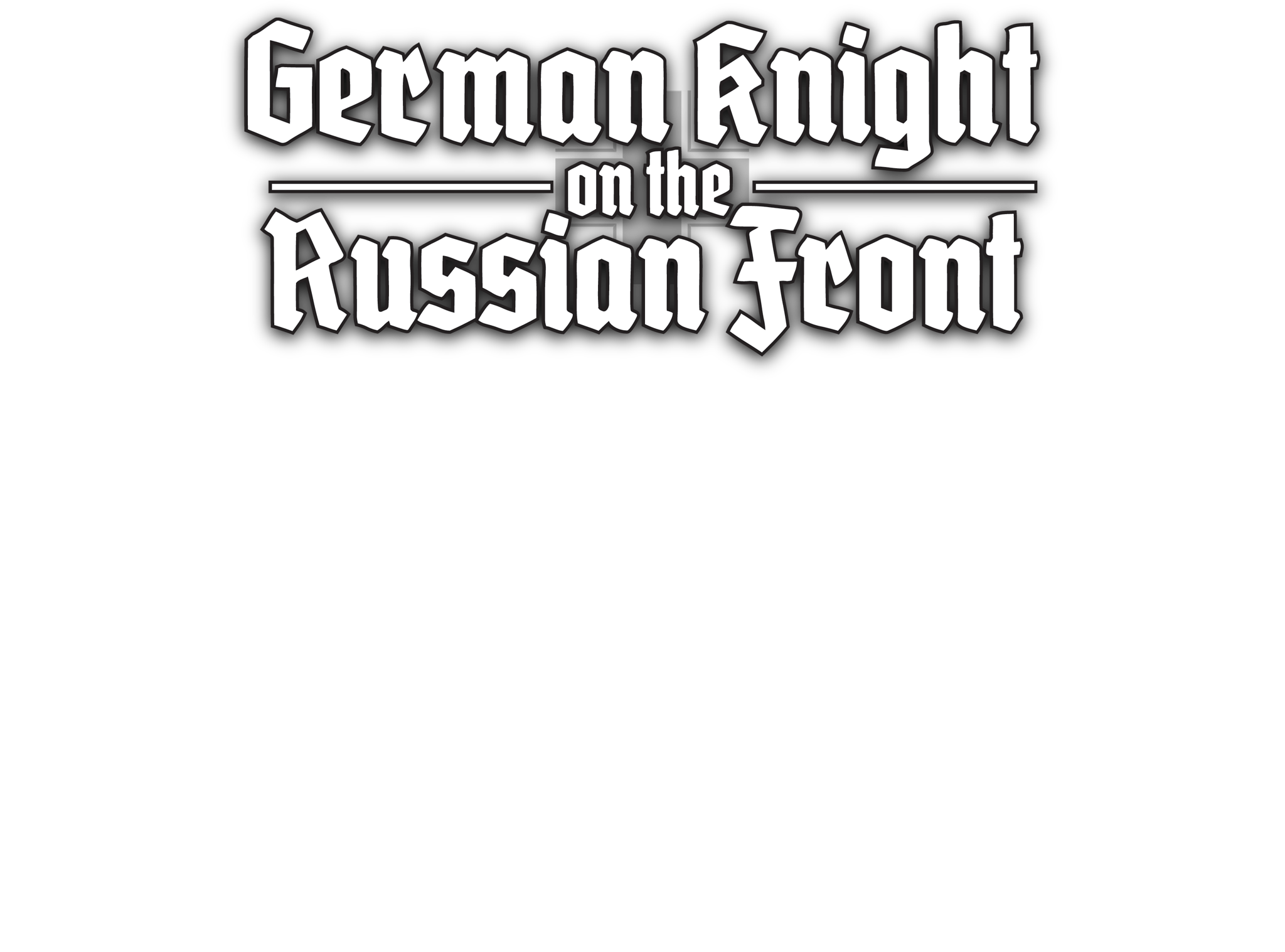


Shortly after dawn on May 31, 1944, near Huşi, Romania, Gerhard Barkhorn downs the first of two Bell P-39s he scored that day. Accompanied by Lt. Erich Hartmann (with 228 victories at the time), Barkhorn would score two more kills that morning for a total of 273, before being shot down, critically wounded, and almost knocked out of the war.
Only battle wounds kept Gerhard Barkhorn, with 301 victories history’s second-ranked fighter pilot, from becoming the all-time ace of aces.
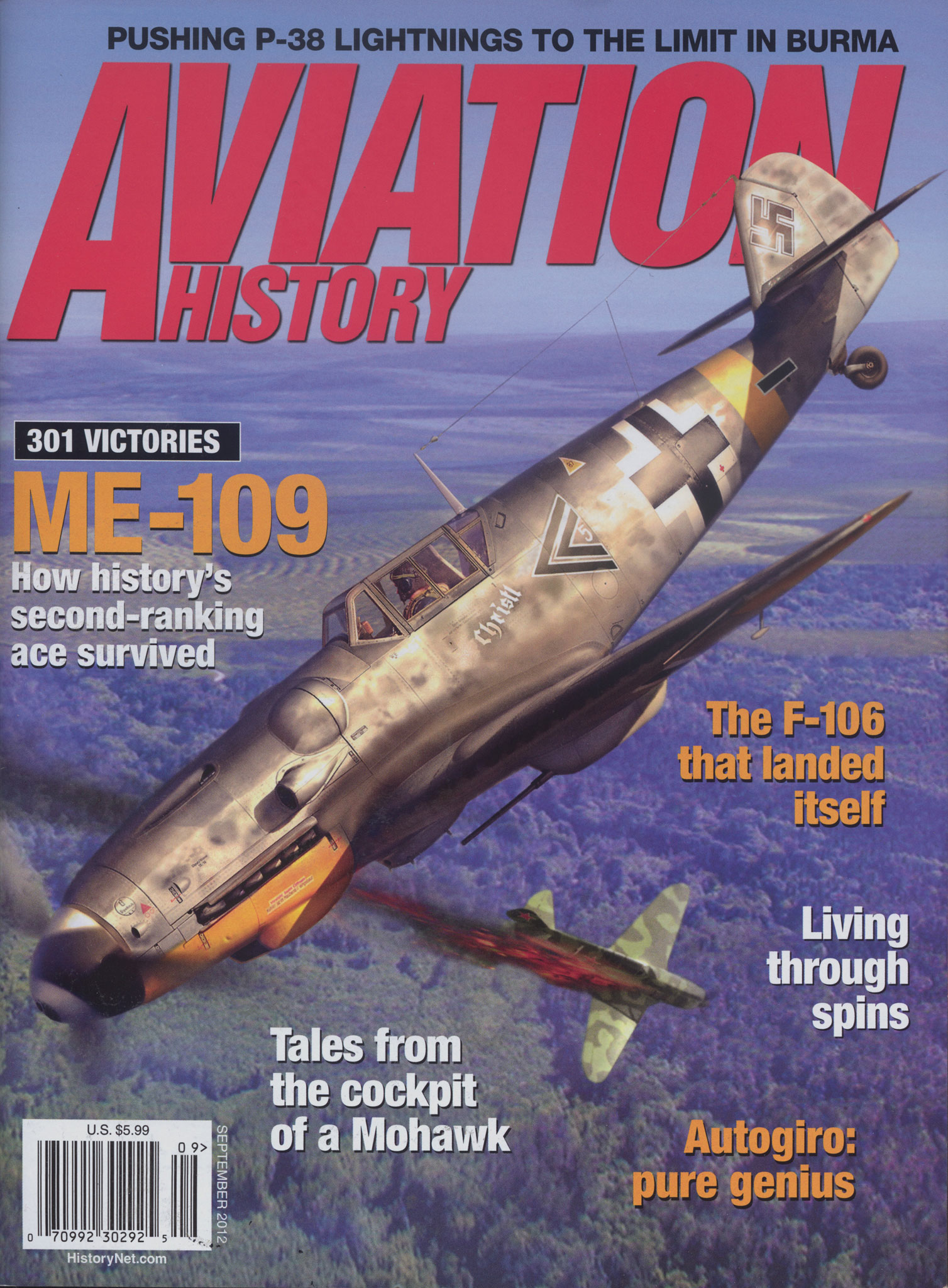

Try, Try Again by Don Hollway Escaping a stricken fighter plane over open water is no picnic in the best of circumstances. Over the English Channel in late October 1940, it was bloody dangerous. 22-year-old Leutnant Gerhard Barkhorn had crashed his Messerschmitt Me-109E in France the month before, but survived. As he came up sputtering cold seawater on this hazy, cloudy Tuesday, his chances of survival seemed less promising. A Supermarine Spitfire (possibly of No. 602 Squadron, Royal Air Force, which downed eight German fighters that day over southern England and another four over the Channel) had holed his fighter’s oil cooler. He’d nursed it out over Dungeness before a Hawker Hurricane of 615 Squadron administered the coup de grâce. Luckily a squadron mate had seen his parachute and radioed German air-sea rescue. As much as for the RAF and Luftwaffe, the Straits of Dover were a battleground for German Schnellboote (fast attack boats) and British Motor Torpedo Boats; not only did the Kriegsmarine speed out to rescue him, so did the Royal Navy, hoping to capture him. The difference between rescue and imprisonment—or death—came down to a matter of minutes. This time it was the British who went home empty-handed, but as the German boat returned him to France and safety, “Gerd” Barkhorn swore never to bail out of an airplane again. Though superior to the Hurricane and a match for the Spitfire, the “Emil’s” short range allowed only 15 minutes of combat time over England—a factor which contributed greatly to Germany’s loss in the Battle of Britain, and from there the entire war. It’s not known if Yellow 2 was the machine in which Barkhorn was shot down in October 1940, but in September he certainly upended it on landing at Calais. Living to fight again was so far the high point of his fighter pilot career. Over Denmark and France with Jagdgeschwader (Fighter Wing) 2 he’d scored nothing. In August he’d transferred to JG.52, then somewhat of a roost for mediocre pilots. Its Captain Johannes “Macky” Steinhoff had scored just six victories, 1st Lt. Günther Rall two and Sergeant Hans-Joachim Marseille seven (four unconfirmed). For their part Barkhorn and fellow eaglet Sergeant Walter Krupinski once scrambled after a British twin-engine Bristol Blenheim on a reconnaissance run. “We took off immediately just as he was out to sea and we shot all our ammunition on that bird, but he got home safe,” recalled Krupinski (nicknamed “Graf”—the Count—for his East Prussian heritage). “Every time when we were in shooting position, he turned—very hard. We two ‘top guns’ of the Luftwaffe couldn’t hit him at all!” “For we Prussians, thinking was difficult,” Barkhorn quipped, “but once we got the trick, you couldn’t stop us.” The Königsberg native himself didn’t get it until June 1941, when JG.52 transferred to the Eastern Front, just prior to Operation Barbarossa, the Nazi invasion of Soviet Russia. It was to be a whole different air war. “I think the British [pilots] were the most dangerous,” maintained Barkhorn, who notably went for his Channel swim the day 602 Squadron Spitfires abandoned the three-plane “Vic” formation for the finger-four German Schwarm. “The Russians used the same formations as the RAF at the beginning, that is to say three aircraft together. We flew in two sections of two aircraft and our flexibility was greater.” Nor did the Soviets’ rigid, follow-the-leader mind-set serve their fliers well. “Few of them were experienced,” he remembered. “Some were flying without looking right, left or behind. And we shot a lot like that. But some were really good pilots.” Unfortunately for those good pilots, Soviet aircraft design had not kept pace either. Their Spanish Civil War-era Polikarpov fighters were outclassed by the Germans’ new Me-109F. Many “Emil” pilots (future General of Fighters Adolf Galland among them) decried the more lightly armed “Friedrich,” but—sleeker, faster and more powerful—it would prove to be Barkhorn’s favorite mount: “The 109F could climb and turn like hell....It was especially good when fitted with the 15mm MG 151 gun. I felt I could do anything with it.” 
Messerschmitt Me 109F-2 “Yellow 7,” 6./JG 52. Sobolewo, Poland, June 1941 Or perhaps it was simply the intensity of combat in the East. Barkhorn had flown just 21 combat sorties over England, but over Russia he reached his 120th in less than three weeks. In early July JG.52 attacked a flight of Ilyushin DB-3 bombers near Minsk, and with the last of his ammo Barkhorn managed to knock one down. Within the month he downed a Polikarpov I-16, and less than a month after that he was an ace. 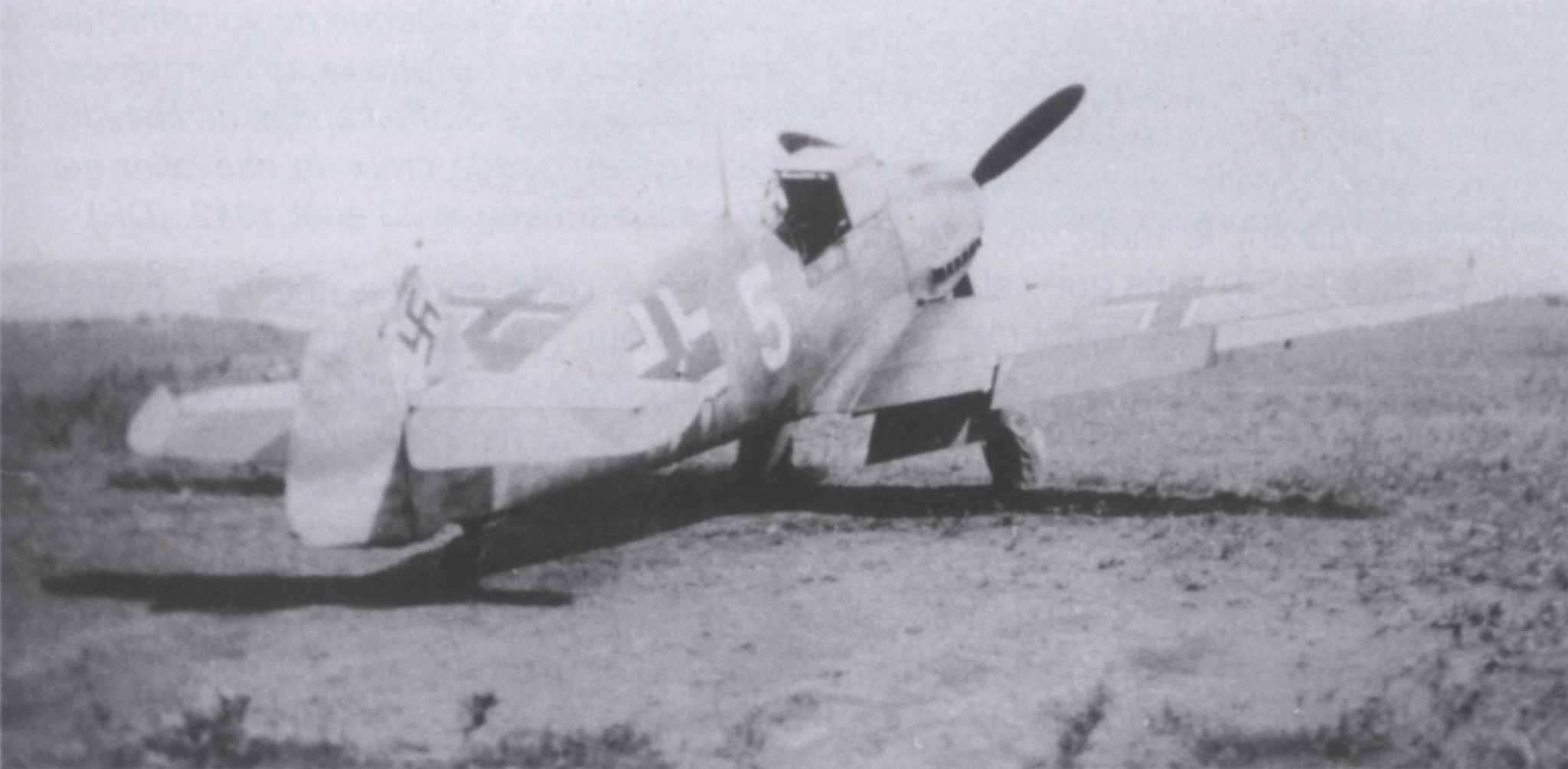
Messerschmitt Me-109F No. 13388 “White 5” on June 22, 1942, the occasion of Barkhorn’s 22nd-26th victories Handsome, a romantic (his aircraft all bore the name of his fiancée, Christl), Prussian-reserved but usually smiling in photos, Gerd Barkhorn seems not to have been cast in the cold-blooded Teutonic mold. Perhaps he was merely sentimental, or superstitious. Assigned Steinhoff’s squadron, in June 1942 he used his Me-109F-4 No. 13388, marked with a prominent white 5, to shoot down five Lavochkin-Gorbunov-Gudkov LaGG-3 fighters in two days in the Kharkov-Taganrog sector—four in one sortie. A week later he was badly shot up and wounded in “White 5,” which nevertheless brought him home. His score stood at 64 for two months while he recuperated, consoling himself with his newly awarded Knight’s Cross. Meanwhile No. 13388 was turned over to 1st Lt. Erwin Stratznicki of JG.3, who promptly wrote it off in a crash landing. Thereafter, as if in memory, Barkhorn’s planes usually bore an additional, nonstandard white 5 somewhere among their squadron chevrons. 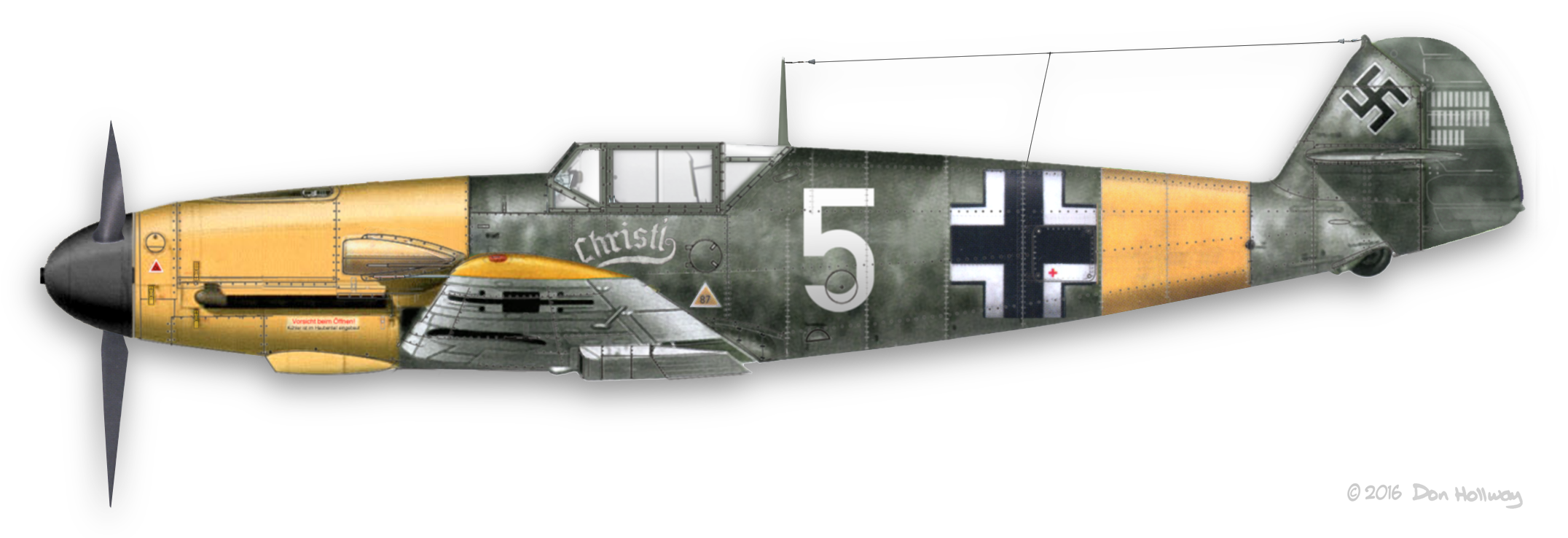
Messerschmitt Me 109F-4 #13388 “White 5,” 4./JG 52. Grakowo, USSR, 22 June 1942
His was not the only lucky star rising in JG.52, which by this time was no mean feat. The wing had racked up its 2,000th kill, on its way to the eventual total of some 10,000, which would make it the most successful fighter unit in history. Steinhoff had long since banished Marseilles to North Africa, where he ran up 158 victories but died trying to bail out of his new Me-109G—a fact surely not lost on the still-recovering Barkhorn. Rall, out of action for nine months after he broke his back in a crash landing (parachutes seem to have been anathema to JG.52 pilots), had returned to combat and soon surpassed Barkhorn’s score. Krupinski, once on the verge of washing out of fighters altogether, had almost caught up when Gerd returned to action in October. And the Count had a new wingman, fresh-faced blond Lieutenant Erich Hartmann, who eventually looked to Barkhorn as his mentor. 
Me-109G-2, JG 52, Eastern Front, early 1943 
With daughter Ursula and wife Cristl (née Fischer), 1944. Eva was born in 1945 and Dorothea (Dorle) in 1954. Though he scored his 100th victory in December, Barkhorn was never one of those ardent Nazis fighting a war of extermination against the Slavs. In at least one famous incident, he pulled alongside a Soviet plane he’d just shot up and crippled, motioned the enemy pilot to jump and held his fire while he did. Witnessing the whole thing, Hartmann asked why. Gerd, who married Christl in 1943 (their daughter Ursula was born the following year), told him: “Bubi, you must remember that one day that Russian pilot was the baby son of a beautiful Russian girl. He has his right to life and love the same as we do.” Chivalry came at a high price over the Crimea and Ukraine, where Barkhorn soon rose to captain and group command. (Steinhoff had gone on to lead JG.77.) He was no long-range deflection shooter in the style of Marseilles or Rall, nor a close-up ambusher like Krupinski or Hartmann. He raised his score the hard way, through constant action—he would be the first fighter pilot to fly more than 1,000 missions—and skill as a dogfighter. “Once I fought for forty minutes against a Russian without being able to win. I was sweating and I guess he was too,” he recalled of a 1943 one-on-one. “We both came out of the big game of acrobatics without touching each other. He belonged to a [Soviet elite] Guards Regiment, and the entire nose of his plane was painted in red. I have no idea who it was.” 
Knights of the Iron Cross by Don Hollway That the Soviets were fielding planes and pilots able to fight triple-digit aces (Barkhorn’s score stood at 200 by the end of November) to a standstill shows the tide had begun to turn. German fighter developers had become less concerned with dueling on the deck than with engaging Allied bombers above the clouds. In early 1944, up for a command in JG.11 in Europe, Barkhorn tested the pressurized Me-109G-5 high-altitude fighter, but “there was no heating in the aircraft and I had to wear goggles. They froze and I could see nothing at this altitude, so I went back to Russia.”
Though Barkhorn had reached 250 kills and Adolf Hitler personally awarded him the Swords to his Knight’s Cross, the JG.11 appointment went to Rall, then nearing 275. (Rall’s tally would stall when his thumb was shot off in action against American fighters on May 12, 1944.) Hartmann, whose score had reached 200, took over Rall’s command in JG.52. Now Barkhorn’s chief rival in the air, the “Blond Knight” had nothing but admiration for him during the long months of retreat on the ground: “He was a man and a leader who really could take his men into hell itself.” “Barkhorn personified the ideal of the military aristocracy,” another fellow pilot noted. “Compared to him, Hartmann gave the impression of someone reluctant to [follow] military regulations and would probably have been a minor official had there been no war. The role of squadron leader suited him perfectly; Gerd Barkhorn, however, was more ambitious and could assume a higher command.” 
Me-109G-6, W.Nr. 15909, II./JG 52, Eastern Front, September, 1943 Source: Eduard.com 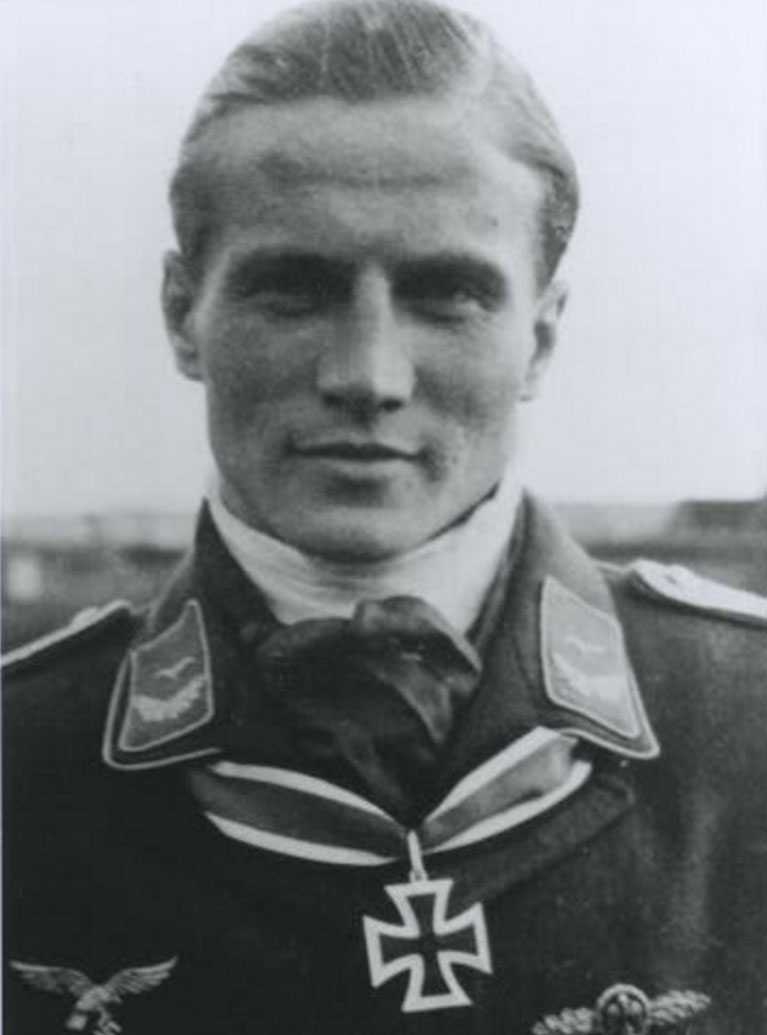
Heinz “Esau” Ewald 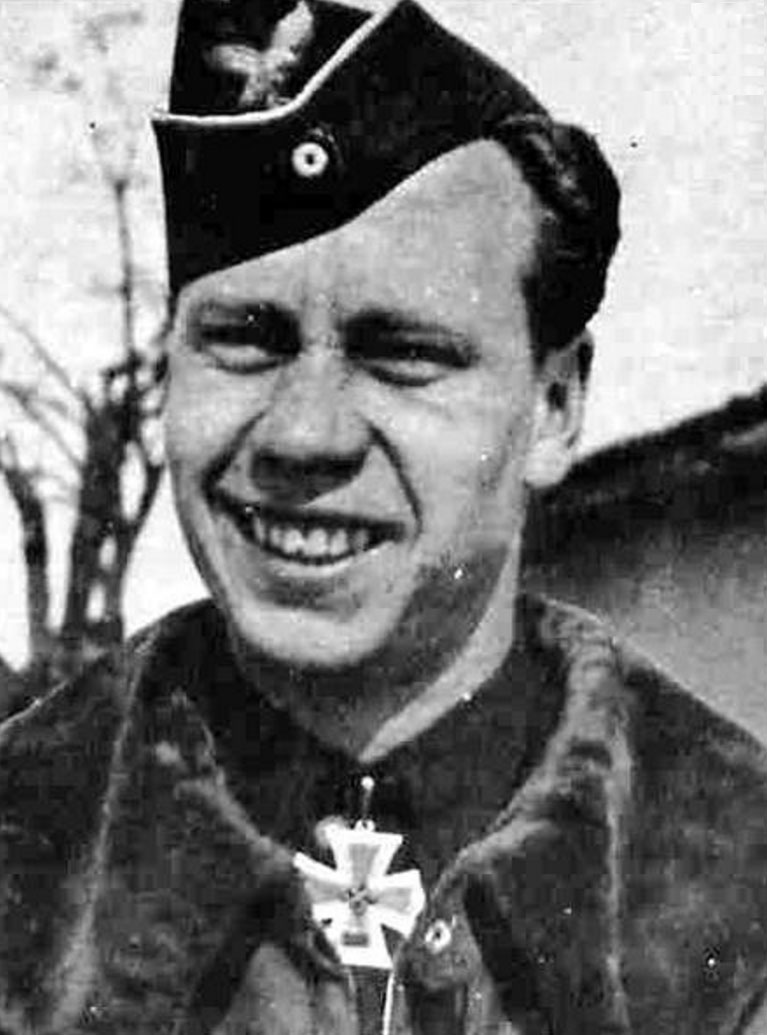
Hans “Dackel” Waldmann He was known for letting wingmen take credit for kills. At least two went on to become experten in their own right. Hans Waldmann joined JG.52 as an NCO but ultimately scored a lieutenancy, a Knight’s Cross and 134 victories, including two in the twin-jet Messerschmitt Me-262 before dying in a 1945 midair collision. And Barkhorn’s favorite, Lieutenant Heinz Ewald, counted 33 victories riding his leader’s wing, rose to a command in JG.52 and ended the war with his own Knight’s Cross and a tally of 84. Luftwaffe aces could no longer count on the superiority of their aircraft. The Me-109G-6 had been progressively laden with heavier guns, belly tanks and underwing cannon pods. Pilots called it the Kanonenboot (gunboat). Meanwhile the Soviets were turning out fighters like the Lavochkin La-5 and Yakovlev Yak-9—lighter, faster, more maneuverable. 
Me-109G-6 “Double Chevron White 5,” II./JG 52, Bagerov, USSR February 1944 “I personally think the Yak-9 was one of the best aircraft in the world,” admitted Barkhorn, whose score included American-built ex-RAF Douglas A-20 Bostons, Curtiss P-40s, several Hurricanes and even a pair of Spitfires in Russian service. Yet he himself was shot down nine times, and once said, “The machine that killed me was an Airacobra.” Barkhorn had downed his first American-made Bell P-39 at the end of May 1943, and 20 more since. Almost a year to the day later, on May 31, 1944, he took off at two in the morning on his first sortie in his Me-109G-6 No. 163195 near Huşi, Romania. In a furious half-hour around 6 a.m. he shot down four Soviet aircraft, including a pair of P-39s in seven minutes. He flew a total of six missions that day. About 8 p.m. he was returning to base from escorting a flight of Junkers Ju-87 Stuka dive bombers, including famous tank-busting ace Captain Hans-Ulrich Rudel. Barkhorn later joked, “I spent four months in the hospital because of him.” He made a novice, near-fatal mistake: “I received a message informing me that many Russian fighters were around. I was very tired and I did not look back. I had 272 victories and was looking for my 275th, but unfortunately the next victim was me!” He was down to his last 25 gallons of fuel, about 20 minutes’ worth, when Hartmann called over the radio: “Russians!” A P-39 had come out of nowhere, 30 yards behind Barkhorn’s Messerschmitt. (It’s claimed to have been flown by Airacobra ace, Hero of the Soviet Union and future Soviet Marshal of Aviation Major Alexander Pokryshkin, but at this time Pokryshkin already had most of his 59 victories and was such a Soviet propaganda tool that he was rarely permitted to fly.) Like the Me-109, the P-39 had a cannon firing through the prop shaft, but the Airacobra’s 37mm M4 had been designed to blow apart bombers with one shot. It was more than enough to shoot down a Messerschmitt. This time there was no question of bailing out. Hit in the right arm, his right kneecap shattered, near fainting from blood loss, Barkhorn still managed to belly-in his crippled bird, sliding some hundred yards. He was extricated and rushed to a field hospital, where his leg was barely saved from amputation. 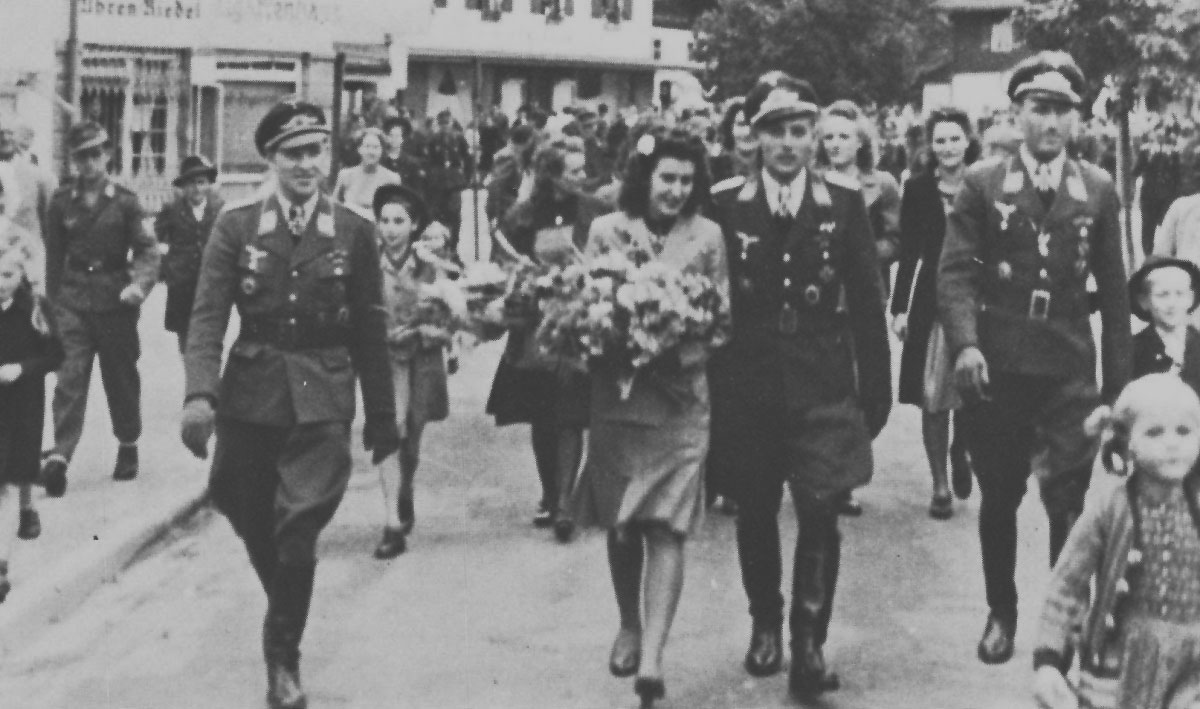
Gerd attends Erich’s wedding to Ursula “Uschi” Paetsch in Wiesbaden, December 1944. Bridesmaid over Hartmann’s left shoulder appears to be Cristl Barkhorn. Meanwhile Hartmann shot down three P-39s that day, bringing his score to 231. That August, with Barkhorn still out of action, he downed another pair of P-39s to make it 273. “Gerd Barkhorn could really enjoy it if someone else was successful. Few men were like this. When I overtook him, he congratulated me with all his heart,” recalled the Blond Knight. Still recuperating from his wounds, Gerd even served in Erich’s wedding that September, when Hartmann’s score already exceeded 300. Barkhorn returned to combat at the end of October, but the ace who averaged a kill almost every three sorties managed less than 30 over the next two months. Still, five days into 1945, he shot down an La-5, his 301st kill—besides Hartmann, the only pilot ever to break the triple-century. 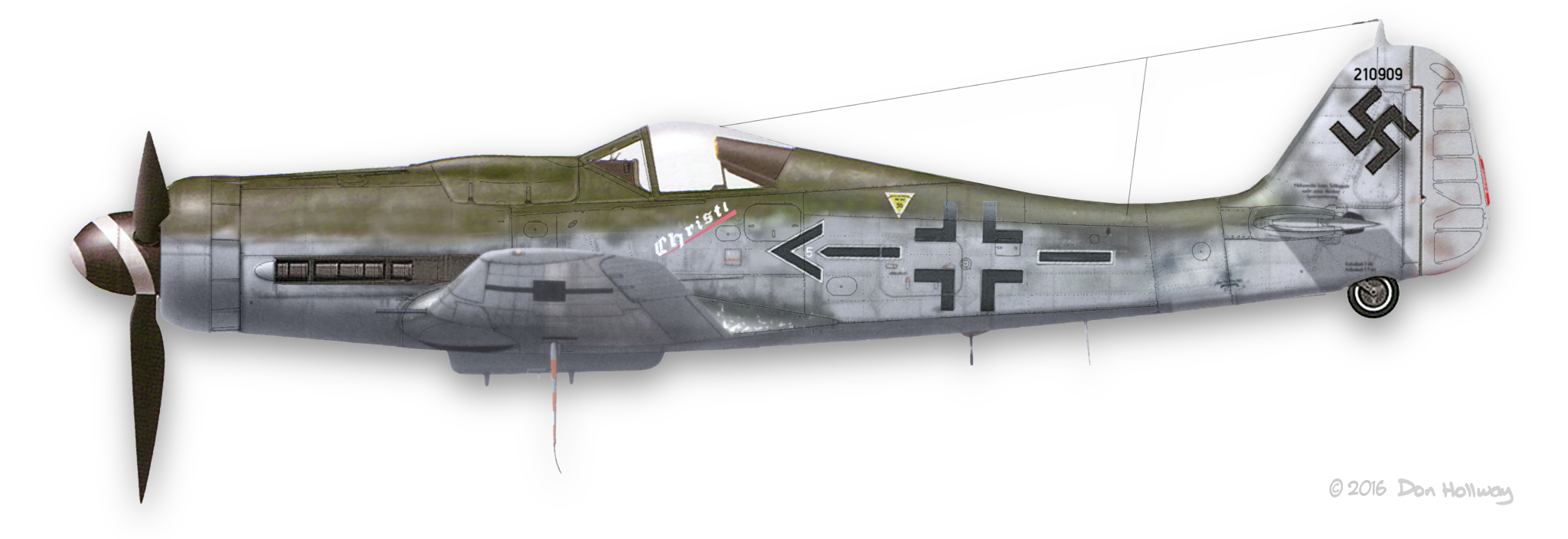
Fw.190D-9, Stab/JG 6, Welzau, Germany, 17 February 1945 In mid-January Barkhorn was tapped to take over JG.6, which had been badly decimated in Operation Bodenplatte on New Year’s Day. They flew the new long-nosed, high-altitude Focke-Wulf Fw-190D-9, but mostly to strafe Soviet ground troops. Barkhorn found the combination of unfamiliar tactics, inexperienced replacement pilots, new aircraft and his own lingering wounds more than he could handle. After three months in command, he was remanded to the fighter pilot hospital at Bad Wiessee in Bavaria. That was where Macky Steinhoff found him, and enlisted him in Jagdverband 44, Galland’s all-experten jet unit. Krupinski was already onboard, though Hartmann preferred to lead in a 109 rather than follow in a 262. (He would finish with 352 victories, but spend 10 years as a POW in Soviet gulags.) Barkhorn must have had reservations. If the Fw-190 had been unfamiliar, the Me-262 was something else altogether, and certainly no dogfighter. It could outrun anything in the air, but liked neither to speed up (slow turbine response), slow down (no air brakes) nor maneuver (requiring miles of turning room), and was subject to engine fires and flameouts. Yet there was no time for training. The experten were put in the cockpit and expected to fly, sometimes with disastrous results. Even 176-victory ace Steinhoff was horrifically burned when his jet crashed on takeoff. 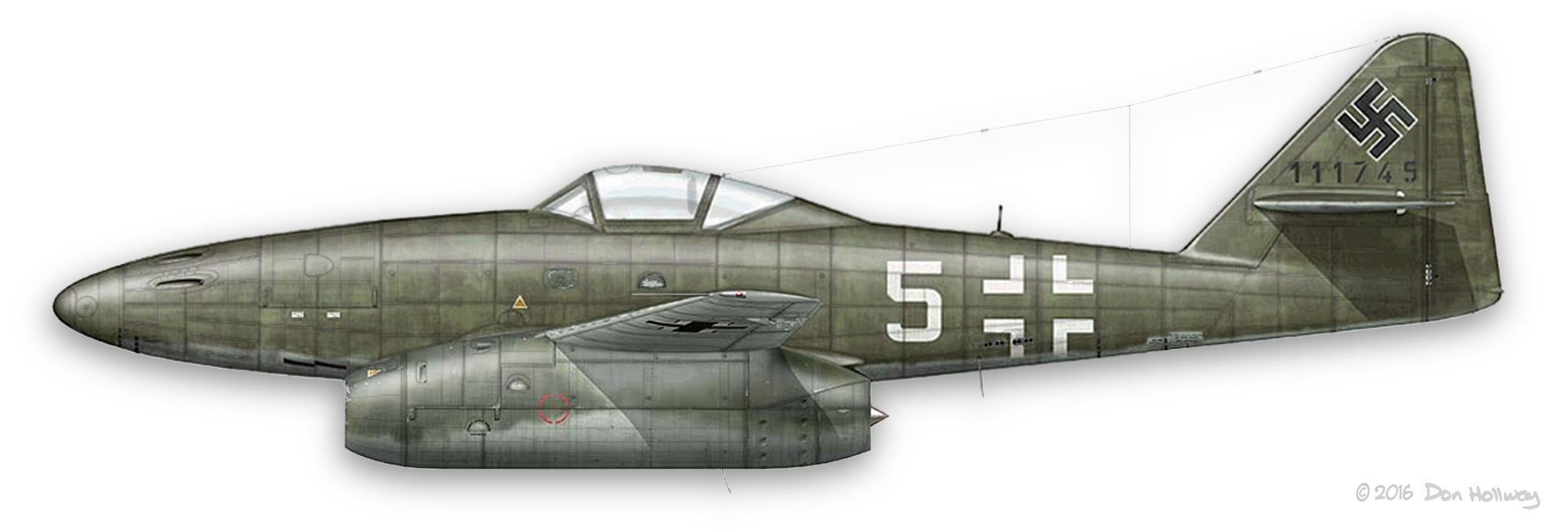
Me-262 A-1a No. 111745 “White 5” of JV.44, Munich-Reim, April 1945 Barkhorn only made two 262 flights (the second his last of the war) and may not have flown this craft. “White 5” is known to have been flown by Obfw. Eduard “The Rammer” Schallmoser (three victories; named for his tactic of ramming enemy bombers when ammunition ran out) when shot down on April 20, 1945. With Russian guns already shelling Berlin, Barkhorn took off on his 1,104th mission—his second in a jet—against Allied bombers over southern Germany. He hadn’t yet engaged the enemy when his starboard engine flamed out. If that wasn’t enough, on approach to base he was jumped by North American P-51 Mustangs. (Allied fighter pilots had quickly learned that the Me-262 was most vulnerable during its long, slow takeoffs and landings. Galland kept Fw-190Ds orbiting on guard duty around the base at Munich-Riem, their undersides painted red with white stripes to distinguish them to flak crews lining the approaches. That may have been all that kept Barkhorn from being shot completely out of the sky.) 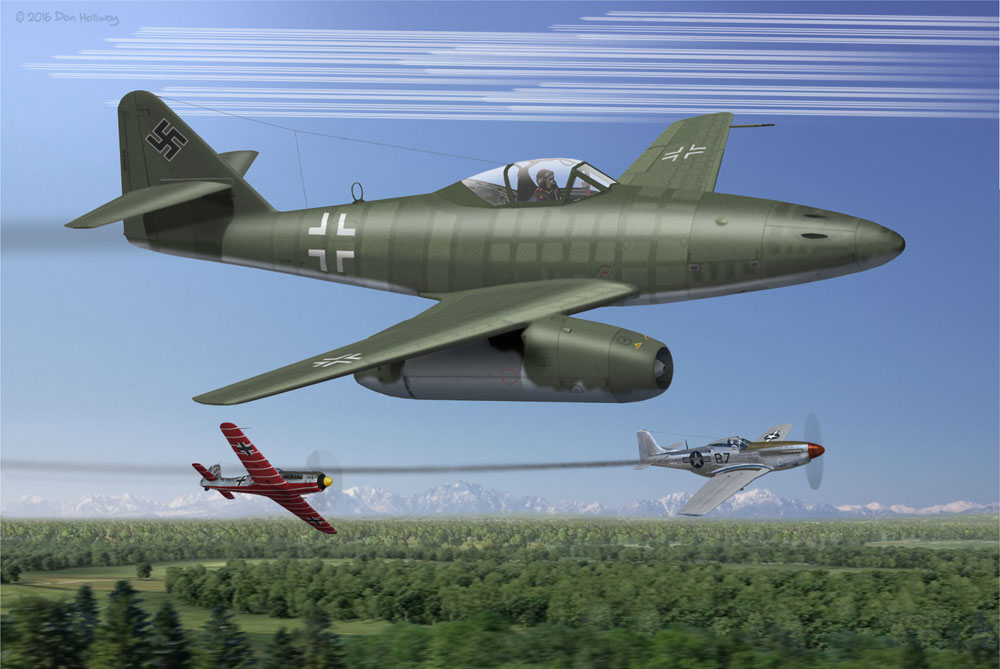
Final Approach by Don Hollway Still short of the runway, powerless to climb, Barkhorn nevertheless refused to jump. He spotted a clearing and, no doubt recalling Steinhoff’s crash, loosened his belts and opened his canopy for quick escape. But the 262, with its pontoon-like jet nacelles, was no 109 to belly-in. Rather than sliding on touchdown, it must have nosed over and dug in. Some sources say Barkhorn was thrown against the windshield rail, others that the canopy slammed shut on the back of his neck. Again he was rushed to the hospital, which saved his life two ways: by the time he made it back to base the war was effectively over. Out of fuel, out of ammo, out of orders and out of options, Germany and JV.44 were beaten. Krupinski topped off his final score of 197 enemy aircraft destroyed by riding down the line of parked 262s, setting off grenades in their intakes. Barkhorn and the remaining pilots were playing cards when American troops took over the field. 
Colonel Barkhorn, commanding JaBoG 31 “Boelcke,” after his first flight in a Lockheed F-104G at Nörvenich, April 13, 1962. More 1956: Barkhorn, Krupinski and Maj. (later Gen.) Herbert Wehnelt, 36 victories, start over again in RAF trainers. Zoom. He was released that September. Like Hartmann, Rall, Steinhoff, Krupinski, Galland and other German war aces, in 1956 Barkhorn enlisted in the revitalized Bundesluftwaffe, the West German Federal Air Force. Commanding Jagdbombergeschwader 31, he flew the Republic F-84F Thunderstreak and the Lockheed F-104G Starfighter. As a colonel on the staff of the Erprobungskommando (Operational Trials Command) he crashed attempting to hover a Hawker Siddeley Kestrel FGA.1 “jump jet.” (It’s said that as he was helped out of the wreckage he commented, “Drei hundert und zwei [302]!”). Ultimately rising to the rank of lieutenant general, he became chief of staff of NATO’s Fourth Allied Tactical Air Force at Ramstein Air Base. He retired in 1975. In a winter storm on January 6, 1983, Gerd and Cristl Barkhorn were involved in an auto accident near Cologne. Cristl died at the scene; Gerd succumbed two days later. “He is my choice of all the Second World War fighter pilots,” said Macky Steinhoff. “Steady, reliable, a good leader, he never made a victory claim that wasn’t confirmed.” “He was the fighter commander of whom every fighter pilot dreams—leader, friend, comrade, father—the best I ever met,” declared Erich Hartmann, “...one of the few commanders whose men thirty, forty, fifty years later, continue to speak of him with respect and affection. Gerd Barkhorn was an unforgettable man.” Even the Blond Knight’s biographers conceded, “There is more of the ancient knight in Gerd Barkhorn than in any other ace.” 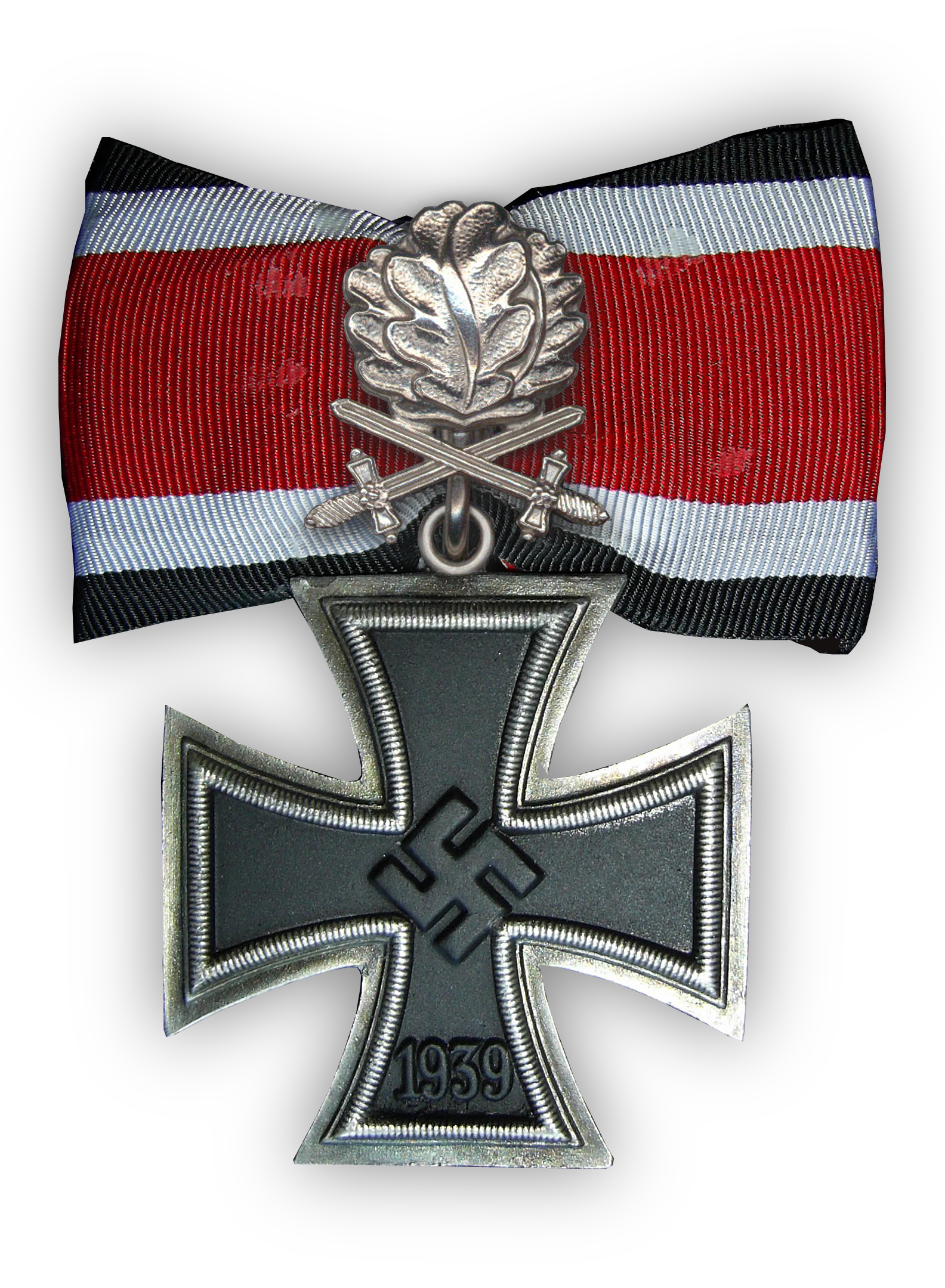
Bibliography
"Gerhard Barkhorn." Aéro Journal #21. Octobre Novembre (2001)
About the authorAuthor/illustrator/historian Don Hollway has been published in Aviation History, Excellence, History Magazine, Military Heritage, Military History, Military Heritage, Civil War Quarterly, Muzzleloader, Porsche Panorama, Renaissance Magazine, Scientific American, Vietnam, Wild West, and World War II magazines. His work is also available in paperback, hardcover and across the internet, a number of which rank extremely high in global search rankings. More from Don Hollway: |
